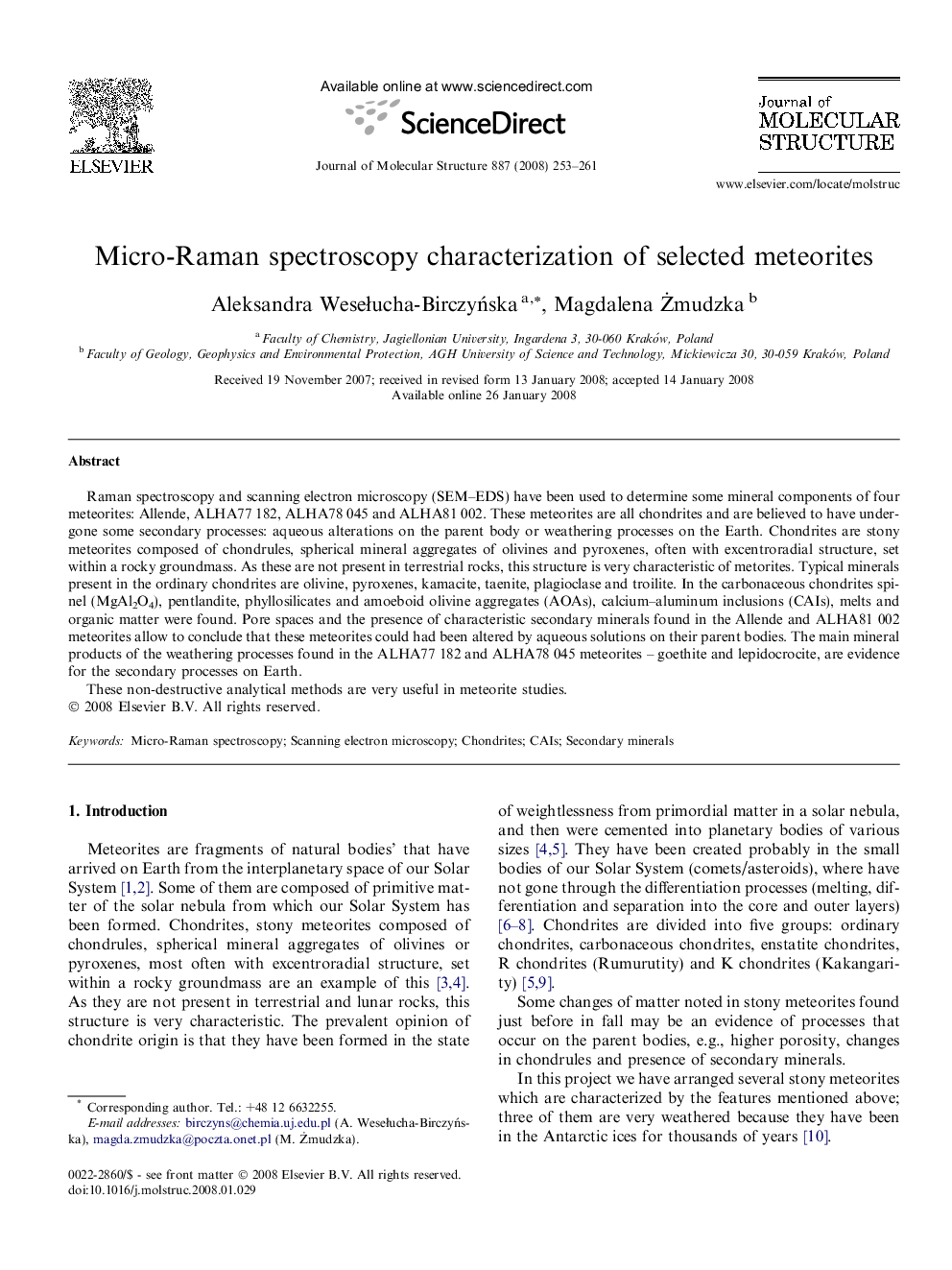| Article ID | Journal | Published Year | Pages | File Type |
|---|---|---|---|---|
| 1406962 | Journal of Molecular Structure | 2008 | 9 Pages |
Raman spectroscopy and scanning electron microscopy (SEM–EDS) have been used to determine some mineral components of four meteorites: Allende, ALHA77 182, ALHA78 045 and ALHA81 002. These meteorites are all chondrites and are believed to have undergone some secondary processes: aqueous alterations on the parent body or weathering processes on the Earth. Chondrites are stony meteorites composed of chondrules, spherical mineral aggregates of olivines and pyroxenes, often with excentroradial structure, set within a rocky groundmass. As these are not present in terrestrial rocks, this structure is very characteristic of metorites. Typical minerals present in the ordinary chondrites are olivine, pyroxenes, kamacite, taenite, plagioclase and troilite. In the carbonaceous chondrites spinel (MgAl2O4), pentlandite, phyllosilicates and amoeboid olivine aggregates (AOAs), calcium–aluminum inclusions (CAIs), melts and organic matter were found. Pore spaces and the presence of characteristic secondary minerals found in the Allende and ALHA81 002 meteorites allow to conclude that these meteorites could had been altered by aqueous solutions on their parent bodies. The main mineral products of the weathering processes found in the ALHA77 182 and ALHA78 045 meteorites – goethite and lepidocrocite, are evidence for the secondary processes on Earth.These non-destructive analytical methods are very useful in meteorite studies.
